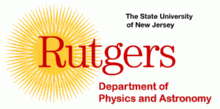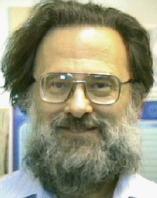
Home page of
Joel Shapiro


|
Home page of Joel Shapiro |

|
| Position: | Faculty | |
| Research groups: |
High Energy Theory Instructional Support and Development |
(Liew, Shapiro, and Smith) |
| Email address: | shapiro@physics.rutgers.edu | |
| Telephone: | (848) 445-8972 | |
| Dept. Fax: | (732) 445-4343 | |
| Office: | Serin W325 | |
| Mailing address: | Joel Shapiro Department of Physics and Astronomy Rutgers, The State University of New Jersey 136 Frelinghuysen Road Piscataway, NJ 08854-8019 USA |
General Relativity (617) Lecture Notes. For Students of 618 Group Theory (2015). |
In the early '90's my focus has turned to physics education, in particular to the uses of technology in large introductory physics courses. In 1993 I got funding for, designed, and built a home-made student response system (SRS) which placed a keypad and feedback lights at each seat of the 330 seat Physics Lecture Hall. In 1994 I initiated a course introducing computing into the Physics Major programming. In 1979 I incorporated a multiple-choice grading program into a record keeping environment for departmental courses, and I have created a latex environment for multiple choice and numerical answer exams. I have written a paper on adjusting recitation grades to compensate for differing standards among the instructors.
Since 1997 I have been working on intelligent tutoring systems (ITS's) for introductory physics courses. During my sabbatical year (2000-2001) at the University of Pittsburgh, I worked on Andes, an intelligent tutoring system for physics now used at the US Naval Academy. I gave a talk on Andes at my Department's instructional seminar, which can be viewed HERE . I have also founded, with two computer scientists, the Watchung Tutor Group, whose home page has links to all our publications on ITS. A talk I gave on my role on the Andes project at the Jan, 2002 AAPT meeting is here ,
Although it does not seem to be a popular opinion, I believe that eventually computer-based tutorials for problem solving in elementary physics courses will become a crucial pedagogical tool, especially in large institutions. I gave colloqua in early 2008 entitled "Can technology really improve teaching introductory physics?" in which I discuss both what is currently available and what I think would be needed to develop more adequate systems.
Here is a talk on relativity and gauge theories that I am to give on April 11, 2006, to the undergraduate Society of Physics Students.
Last modified: Thu Nov 19 11:34:25 2015